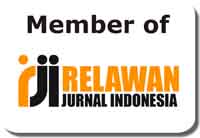Audio Speed Changer Application: Advancing Students’ Listening Comprehension
Abstract
Keywords
Full Text:
PDFReferences
Abu-Snoubar, T. K. (2017). On The Relationship between Listening and Speaking Grades of AL-Balqa Applied University English as a Foreign Language Students. International Education Studies, 10(12), 130. https://doi.org/10.5539/ies.v10n12p130
Amal, et all. (2019). Using English Movie with Delay and Non Delay Subtitle to Improve Listening Skill. Journal of Linguistics and English Teaching Studies, 1(1), 1–10. http://www.stainmajene.id/index.php/lets/article/view/13
Anggraini, N and Istiqomah, L. (2019). An Analysis of Pronunciation Errors of English Consonant Sounds Produced by English Department Students. Wacana Didaktika, 11(3), 41–46.
ASC. (2018). Audio Speed Changer. www.Audiospeedchanger.Com/. https://www.audiospeedchanger.com/
Bingol et al. (2014). Listening comprehension difficulties encountered by students in second language learning class. Journal of Educational and Instructional Studies in the World, 4(4), 25–30.
Buck, G. (2001). Assessing Listening. Cambridge University Press. https://doi.org/http://dx.doi.org/10.1017/CBO9780511732959
Cahyono, BY and Widiati, U. (2009). The Teaching of EFL Listening in the Indonesian Context: The State of the Art. TEFLIN Journal, 20(2), 194–211.
Gallagher, E. (2015). Building language skills. Part 1: Listening. UNO Internacional. https://mx.unoi.com/2015/10/21/building-language-skills-part-1-listening/
Gilakjani, A. P., & Sabouri, N. B. (2016). Learners' Listening Comprehension Difficulties in English Language Learning: A Literature Review. English Language Teaching, 9(6), 123. https://doi.org/10.5539/elt.v9n6p123
Hornby, A. . (1995). Oxford Advanced Learner's Dictionary of Current English. Oxford University Press.
Kementrian Pendidikan dan Kebudayaan. (2017). Panduan Penilaian oleh Pendidik dan Satuan Pendidikan Atas. Kementerian Pendidikan dan Kebudayaan.
Kemmis & Taggart. (1988). The Action Research Planner. Deakin University Press.
Liu, J. (2016). Adaptation of Authentic Materials in English Listening Comprehension Classes. Theory and Practice in Language Studies, 6(9), 1774. https://doi.org/10.17507/tpls.0609.08
Maisarah. (2016). The Importance of Listening Skill as the Foundation to a Good Communication. Diglossia, 7(2), 1–11.
Putra, W. H. (2019). Improving the Students' Listening Comprehension through Drill Technique. Teknosastik, 16(2), 49. https://doi.org/10.33365/ts.v16i2.140
Renukadevi, D. (2014). The Role of Listening in Language Acquisition; the Challenges & Strategies in Teaching Listening. International Journal of Education and Information Studies, 4(1), 59–63. http://www.ripublication.com
Rost, M. (1991). Listening in Action. Prentice Hall.
Ulum, Ö. G. (2015). Listening: The Ignored Skill in EFL Context. International Journal of Humanities Social Sciences and Education (IJHSSE), 2(5), 72–76.
Underwood, M. (1989). Teaching listening. Longman.
Wolvin and Carolyn. (1982). Listening. W.C. Brown.
Wong, A. (2015). The Act of Listening: The processes involved in listening comprehension. Hirao School of Management Review, 5(October), 73–80.
DOI: http://dx.doi.org/10.31332/lkw.v7i1.2154
Copyright (c) 2021 Nur Fadillah Nurchalis

This work is licensed under a Creative Commons Attribution-ShareAlike 4.0 International License.
Langkawi: Journal of The Association for Arabic and English indexed by:


















.png)
.png)

.png)
2.png)








